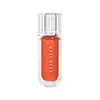What's inside
What's inside
 Key Ingredients
Key Ingredients

No key ingredients
 Benefits
Benefits

 Concerns
Concerns

 Ingredients Side-by-side
Ingredients Side-by-side

Hydrogenated Polyisobutene
EmollientDiisostearyl Malate
EmollientOctyldodecanol
EmollientCaprylic/Capric Triglyceride
MaskingDextrin Palmitate
EmulsifyingSilica Dimethyl Silylate
EmollientSilica Silylate
EmollientMenthol
MaskingSorbitan Isostearate
EmulsifyingPolyglyceryl-2 Triisostearate
EmulsifyingCalcium Titanium Borosilicate
AbrasivePolyglyceryl-2 Diisostearate
EmulsifyingDipalmitoyl Hydroxyproline
Skin ConditioningSqualane
EmollientCI 77891
Cosmetic ColorantDehydroacetic Acid
PreservativeCI 19140
Cosmetic ColorantCI 15850
Cosmetic ColorantCI 77491
Cosmetic ColorantHydrogenated Polyisobutene, Diisostearyl Malate, Octyldodecanol, Caprylic/Capric Triglyceride, Dextrin Palmitate, Silica Dimethyl Silylate, Silica Silylate, Menthol, Sorbitan Isostearate, Polyglyceryl-2 Triisostearate, Calcium Titanium Borosilicate, Polyglyceryl-2 Diisostearate, Dipalmitoyl Hydroxyproline, Squalane, CI 77891, Dehydroacetic Acid, CI 19140, CI 15850, CI 77491
Hydrogenated Polyisobutene
EmollientCaprylic/Capric Triglyceride
MaskingDiisostearyl Malate
EmollientPolyglyceryl-2 Triisostearate
EmulsifyingDextrin Palmitate
EmulsifyingSorbitan Isostearate
EmulsifyingSilica Silylate
EmollientCI 77891
Cosmetic ColorantParfum
MaskingCI 19140
Cosmetic ColorantCI 77492
Cosmetic ColorantDehydroacetic Acid
PreservativeCI 15850
Cosmetic ColorantPolyglyceryl-2 Diisostearate
EmulsifyingCI 15985
Cosmetic ColorantCI 45410
Cosmetic ColorantRaspberry Seed Oil/Tocopheryl Succinate Aminopropanediol Esters
Skin ConditioningWater
Skin ConditioningNelumbo Nucifera Flower Extract
Skin ConditioningNymphaea Alba Flower Extract
Skin ConditioningRosa Hybrid Flower Extract
Skin ConditioningPrunus Serrulata Flower Extract
Skin ConditioningPotassium Sorbate
PreservativeGlycerin
HumectantSucrose Palmitate
EmollientHydrogenated Lecithin
EmulsifyingSimmondsia Chinensis Seed Oil
EmollientMacadamia Integrifolia Seed Oil
Skin ConditioningOlea Europaea Fruit Oil
MaskingVitis Vinifera Seed Oil
EmollientHydrogenated Polyisobutene, Caprylic/Capric Triglyceride, Diisostearyl Malate, Polyglyceryl-2 Triisostearate, Dextrin Palmitate, Sorbitan Isostearate, Silica Silylate, CI 77891, Parfum, CI 19140, CI 77492, Dehydroacetic Acid, CI 15850, Polyglyceryl-2 Diisostearate, CI 15985, CI 45410, Raspberry Seed Oil/Tocopheryl Succinate Aminopropanediol Esters, Water, Nelumbo Nucifera Flower Extract, Nymphaea Alba Flower Extract, Rosa Hybrid Flower Extract, Prunus Serrulata Flower Extract, Potassium Sorbate, Glycerin, Sucrose Palmitate, Hydrogenated Lecithin, Simmondsia Chinensis Seed Oil, Macadamia Integrifolia Seed Oil, Olea Europaea Fruit Oil, Vitis Vinifera Seed Oil
Ingredients Explained
These ingredients are found in both products.
Ingredients higher up in an ingredient list are typically present in a larger amount.
This ingredient is an emollient, solvent, and texture enhancer. It is considered a skin-softener by helping the skin prevent moisture loss.
It helps thicken a product's formula and makes it easier to spread by dissolving clumping compounds.
Caprylic Triglyceride is made by combining glycerin with coconut oil, forming a clear liquid.
While there is an assumption Caprylic Triglyceride can clog pores due to it being derived from coconut oil, there is no research supporting this.
Learn more about Caprylic/Capric TriglycerideCi 15850 is the pigment color red. It is an azo dye and created synthetically.
Azo dyes need to be thoroughly purified before use. This allows them to be more stable and longer-lasting.
This ingredient is common in foundations, lipsticks, and blushes. This color is described as brown/orangey red.
It has many secondary names such as Red 6 and Red 7. According to a manufacturer, Red 6 usually contains aluminum.
Learn more about CI 15850CI 19140 is also known as Tartrazine. Tartrazine is a synthetic dye used in cosmetics, foods, and medicine to add a yellow color.
Tartrazine is created from petroleum and is water-soluble.
Some people may experience allergies from this dye, especially asthmatics and those with an aspirin intolerance.
Learn more about CI 19140Ci 77891 is a white pigment from Titanium dioxide. It is naturally found in minerals such as rutile and ilmenite.
It's main function is to add a white color to cosmetics. It can also be mixed with other colors to create different shades.
Ci 77891 is commonly found in sunscreens due to its ability to block UV rays.
Learn more about CI 77891Dehydroacetic Acid is fungicide and bactericide. It is used as a preservative in cosmetics. Preservatives help elongate the shelf life of a product.
Dehydroacetic Acid is not soluble in water.
Dextrin Palmitate comes from the palmitic acid ester of Dextrin. It is used as an emulsifier and texture enhancer.
Emulsifiers help keep ingredients together. According to a manufacturer, dextrin palmitate helps create a low-viscosity gel texture.
Due to its fatty acid base, this ingredient is not fungal-acne safe.
Learn more about Dextrin PalmitateDiisostearyl Malate is an emollient and most often used in lip products. It comes from isostearyl alcohol, a fatty acid, and malic acid, an AHA.
As an emollient, Diisostearyl Malate helps create a thin film on your skin to trap moisture in. This helps keep your skin soft and smooth.
Hydrogenated Polyisobutene is a synthetic polymer. Polymers are compounds with high molecular weight. Hydrogenated Polyisobutene is an emollient and texture enhancer.
In one study, Hydrogenated Polyisobutene showed better skin hydration levels than Caprylic/Capric Triglyceride. As an emollient, it helps keep your skin soft and hydrated by trapping moisture in.
Hydrogenated Polyisobutene is often used as a mineral oil replacement.
Learn more about Hydrogenated PolyisobutenePolyglyceryl-2 Diisostearate isn't fungal acne safe.
This ingredient is a form of glycerin with emulsifying and emollient properties.
As an emulsifier, this ingredient helps keep products together while adding a thick texture. The manufacturer states this ingredient has emollient properties. Emollients help keep the skin hydrated by trapping moisture in.
Polyglyceryl-2 Triisostearate is created by reacting diglycerin and isostearic acid. Due to the isostearic acid base, it may not be safe for Malassezia or fungal acne.
Learn more about Polyglyceryl-2 TriisostearateSilica Silylate is a siloxane polymer, meaning it is made up of silicon and oxygen atoms. It is not soluble in water.
This ingredient is a white powder with oil-absorbing, emollient, and anticaking properties.
Sorbitan Isostearate is an emulsifer and cleaning agent. It is created from isostearic acid and sorbitol.
As an emulsifier, Sorbitan Isostearate prevents oils and water from separating.
Due to its isostearic acid base, it may not be safe for Malassezia or fungal acne.
Learn more about Sorbitan Isostearate